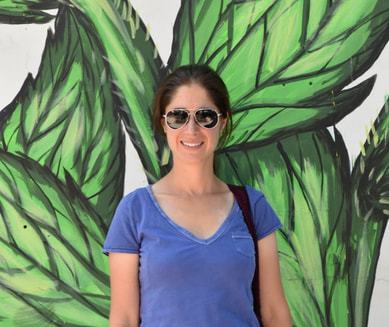
I love plants, especially plants that are food, and I love connecting people and plants through teaching and community outreach.
I began my undergraduate studies at Williams College as a pre-med student displaying a high level of plant awareness disparity. But my first botany class opened my eyes to plants and the natural world. Soon I realized that I wasn’t so interested in sickness and medicine, but rather in wellness. And human wellbeing depends on plants!
Agriculture is an exciting intersection between plants and people. My educational formation after college was driven by my particular fascination with agrobiodiversity. Agrobiodiversity includes all of the biodiversity and cultural diversity in agricultural systems. Think, for example, about heritage apple varieties – many different colors, shapes, flavors, and connections to people and places.
I’ve had the opportunity to learn a lot about agrobiodiversity and its relationship to human wellbeing as a Peace Corps Volunteer in Guatemala and as a graduate student at the University of Wisconsin-Madison Department of Botany, where I wrote my PhD dissertation about the Andean tuber crop, oca. Though my dissertation research gets deep into the nitty gritty details of crop evolution, genetics, and folk taxonomy, my biggest takeaway was this: agrobiodiversity conservation, and, relatedly, human wellbeing, depends on humans having an emotional connection to the natural world.
I’ve continued to work toward supporting human wellbeing and agrobiodiversity, and I now use botany education and outreach to spark these connections between people and the natural world. I've done this through academic teaching and botanical outreach at Swarthmore College; as the Project Coordinator of The Farm at St. Joseph Mercy Health System, Michigan’s first hospital-based farm; and through freelance endeavors, which I continue to develop, and which you can read about on this site.
For more details, please check out my CV.
I began my undergraduate studies at Williams College as a pre-med student displaying a high level of plant awareness disparity. But my first botany class opened my eyes to plants and the natural world. Soon I realized that I wasn’t so interested in sickness and medicine, but rather in wellness. And human wellbeing depends on plants!
Agriculture is an exciting intersection between plants and people. My educational formation after college was driven by my particular fascination with agrobiodiversity. Agrobiodiversity includes all of the biodiversity and cultural diversity in agricultural systems. Think, for example, about heritage apple varieties – many different colors, shapes, flavors, and connections to people and places.
I’ve had the opportunity to learn a lot about agrobiodiversity and its relationship to human wellbeing as a Peace Corps Volunteer in Guatemala and as a graduate student at the University of Wisconsin-Madison Department of Botany, where I wrote my PhD dissertation about the Andean tuber crop, oca. Though my dissertation research gets deep into the nitty gritty details of crop evolution, genetics, and folk taxonomy, my biggest takeaway was this: agrobiodiversity conservation, and, relatedly, human wellbeing, depends on humans having an emotional connection to the natural world.
I’ve continued to work toward supporting human wellbeing and agrobiodiversity, and I now use botany education and outreach to spark these connections between people and the natural world. I've done this through academic teaching and botanical outreach at Swarthmore College; as the Project Coordinator of The Farm at St. Joseph Mercy Health System, Michigan’s first hospital-based farm; and through freelance endeavors, which I continue to develop, and which you can read about on this site.
For more details, please check out my CV.